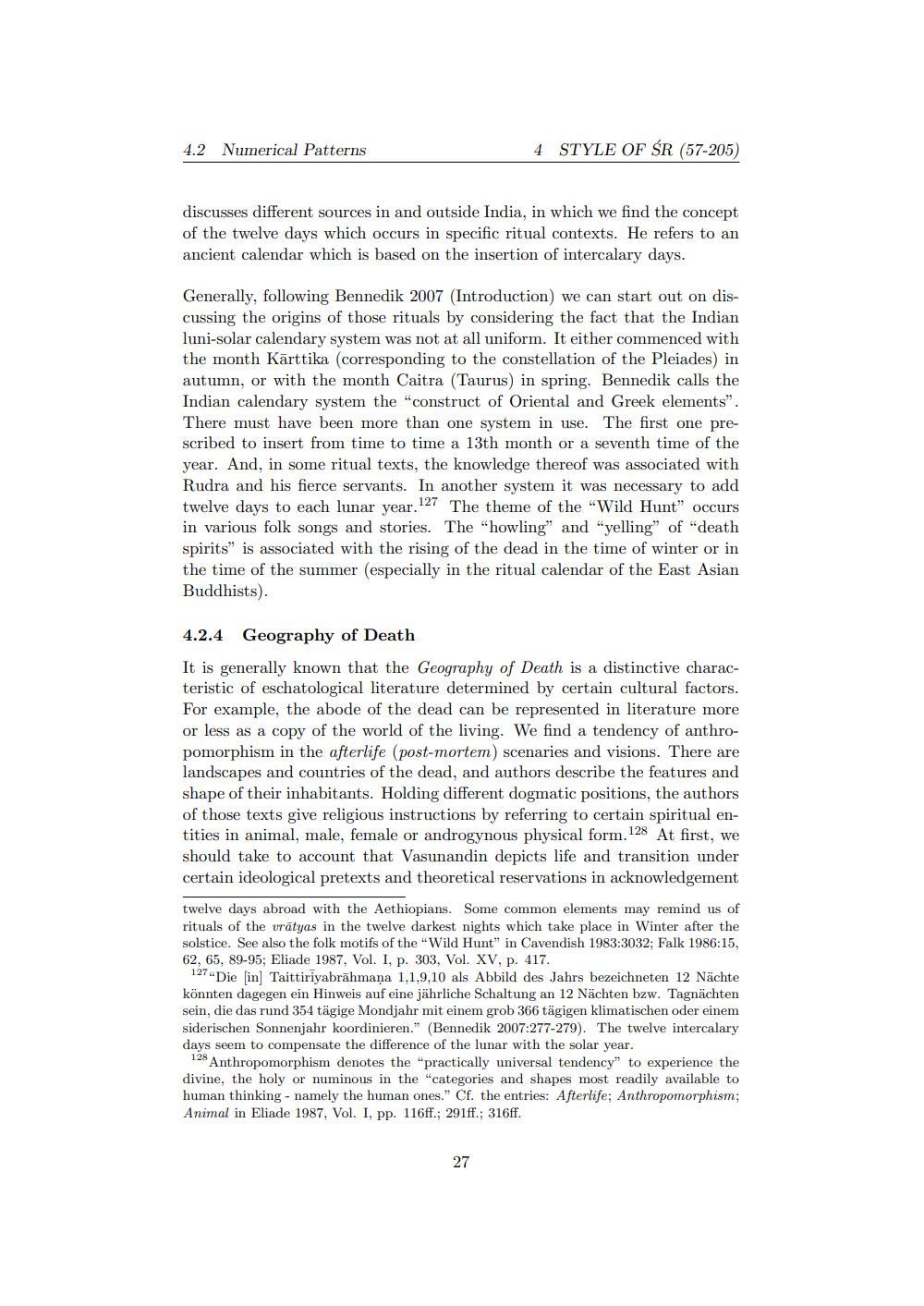________________
4.2 Numerical Patterns
4 STYLE OF ŚR (57-205)
discusses different sources in and outside India, in which we find the concept of the twelve days which occurs in specific ritual contexts. He refers to an ancient calendar which is based on the insertion of intercalary days.
Generally, following Bennedik 2007 (Introduction) we can start out on discussing the origins of those rituals by considering the fact that the Indian luni-solar calendary system was not at all uniform. It either commenced with the month Kārttika (corresponding to the constellation of the Pleiades) in autumn, or with the month Caitra (Taurus) in spring. Bennedik calls the Indian calendary system the "construct of Oriental and Greek elements". There must have been more than one system in use. The first one prescribed to insert from time to time a 13th month or a seventh time of the year. And, in some ritual texts, the knowledge thereof was associated with Rudra and his fierce servants. In another system it was necessary to add twelve days to each lunar year.127 The theme of the Wild Hunt" occurs in various folk songs and stories. The "howling" and "yelling" of "death spirits" is associated with the rising of the dead in the time of winter or in the time of the summer (especially in the ritual calendar of the East Asian Buddhists).
4.2.4 Geography of Death It is generally known that the Geography of Death is a distinctive characteristic of eschatological literature determined by certain cultural factors. For example, the abode of the dead can be represented in literature more or less as a copy of the world of the living. We find a tendency of anthropomorphism in the afterlife (post-mortem) scenaries and visions. There are landscapes and countries of the dead, and authors describe the features and shape of their inhabitants. Holding different dogmatic positions, the authors of those texts give religious instructions by referring to certain spiritual entities in animal, male, female or androgynous physical form. 128 At first, we should take to account that Vasunandin depicts life and transition under certain ideological pretexts and theoretical reservations in acknowledgement
twelve days abroad with the Aethiopians. Some common elements may remind us of rituals of the urâtyas in the twelve darkest nights which take place in Winter after the solstice. See also the folk motifs of the Wild Hunt" in Cavendish 1983:3032: Falk 1986:15, 62, 65, 89-95; Eliade 1987, Vol. I, p. 303, Vol. XV, p. 417.
127 "Die in Taittiriyabrāhmana 1.1,9,10 als Abbild des Jahrs bezeichneten 12 Nächte könnten dagegen ein Hinweis auf eine jährliche Schaltung an 12 Nächten bzw. Tagnächten sein, die das rund 354 tägige Mondjahr mit einem grob 366 tägigen klimatischen oder einem siderischen Sonnenjahr koordinieren." (Bennedik 2007:277-279). The twelve intercalary days seem to compensate the difference of the lunar with the solar year.
128 Anthropomorphism denotes the "practically universal tendency to experience the divine, the holy or numinous in the "categories and shapes most readily available to human thinking - namely the human ones." Cf. the entries: Afterlife; Anthropomorphism; Animal in Eliade 1987, Vol. I, pp. 116ff.; 291ff.; 316ff.
27




